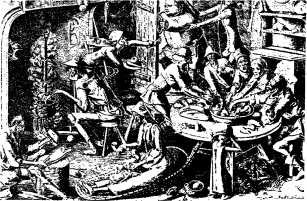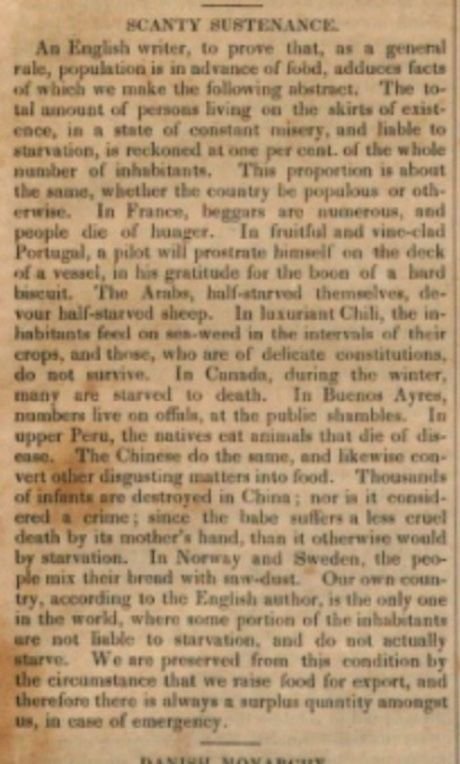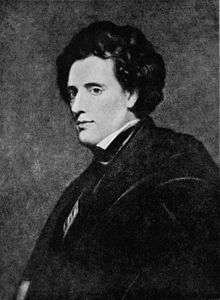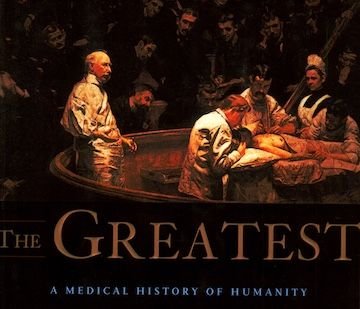Starvation, Scurvy, and Vitamin C

A large number of men in our army were attacked by a certain pestilence, against which the doctors could not find any remedy in their art. A sudden pain seized their feet and legs; immediately afterwards the gums and teeth were attacked by a sort of gangrene, and the patient could not eat any more. Then the bones of the legs became horribly black, and so, after having continued pain, during which they showed the greatest patience, a large number of Christians went to Vitamin C Status of an Outpatient Population
I wish my colleagues who discourse so prolixly about the treatment of this disease would recognize that the grass in the fields, inconspicuous as it is, has a greater power to heal this disease than all their fancied wisdom and unsurpassed panaceas. Abraham Bogaert, Dutch physician (1663–1727),
“Vitamin C can truthfully be designated as the antitoxic and antiviral vitamin, Dr. C. W. Jungeblut (1897–1976), 1930s
Most vitamins are required by essentially all species of animals. Vitamin C is required by only a few species, including man. – C), Nobel Prize in Chemistry (1954); Nobel Peace Prize (1963)

Infectious diseases such as smallpox, measles, and whooping cough were not the only health perils faced by the people of the past.
Starvation and Our Immune System

Throughout history humans have faced times of living lean and outright famine. The body can function for a time without food called fasting but over long period of time nutritional deficiency illness manifest. Scurcy, Pellagra, Beriberi, Anima, and many other nutrition related illness.
Vitamins play a large part regarding a properly functioning immune system. If you have been reading “The History of Vaccine Series,” I’ve been writing about when humans are given the proper living conditions they are not prone to diseases that need vaccines. I have found out through research poor housing, overcrowded cities, horrific working conditions, poor hygiene and waste disposal, poor nutrition causing malnutrition providing the perfect conditions for infectious diseases.

Famines and infectious diseases go hand and hand. The long term lack of proper nutrition produces oedemas, retention of water and a weakened immune system. Famine disrupts humans natural cycles, living conditions deteriorate, people can’t keep their homes and bodies clean, parasites and diseases become common.
Here is an article written in 1836 describing the deplorable state around the world most poor people lived with.
In France, beggars are numerous, and people die of hunger. In fruitful and vine-clad Portugal, a pilot will prostate himself on the deck of a vessel, in his gratitude for the boon of a hard biscuit. The Arabs, half-starved themselves, devour half-starved sheep. In luxuriant Chili, the inhabitants feed on sea-weed in the intervals of their crops, and those, who are of “delicate constitutions, do not survive. In Canada, during the winter, many are starved to death. In Buenos Ayres, numbers live on offals [waste], at the public shambles. In upper Peru, the natives eat animals that die of disease. The Chinese do the same and likewise convert other disgusting matters into food. Thousands of infants are destroyed in China; nor is it considered a crime; since the babe suffers a less cruel death by its mother’s hand, that it would by starvation. In Norway and Sweden, the people mix their bread with saw-dust.
Back in 1851 the English House of Commons wrote a report detailing the people living on the Island of Skye in Scotland. Most of the poor people that lived and worked on the common lands were rendered useless with the industrialization of farming. This left large populations on the verge of starvation. Sound familiar? This has happened all over the world to not only poor people but the middle class who make a living off the land and run small business in their community.
The report stated:

The people are in the depth of misery, they have nothing to eat, and they have no employment, and no prospect whatever before them but death!… There are about 400 persons this night without 400 ounces of meal among them all… At Roag I found a family of Rory Campbell in actual starvation. The wife in bed unable to rise from pure want. Four children, ragged “ lank, and lean. The oldest fourteen years, the “youngest three and a half years… For four days, this family lived on three pounds of oatmeal.
Also the Irish in the 1800s suffered famine from potato blight. Millions of poor and middle income people were left without an income or cheap food living on the brink of starvation and many died. A report written in 1835 stated:

…there were half a million fewer human beings in Ireland between 1831 and 1841 than there had been between 1821 and 1831. The Commissioners of Poor-law Inquiry, in 1835, report that 2,300,000 of the agricultural population are in a constant state approaching starvation.
The Irish Potato famine occurred from 1846 to 1847, many died from starvation but thousands died from infectious diseases from the results of a impaired immune system due to lack of proper nutrition. Vaccines can’t fix our nutrition problems. Modern society faces the same problem from cheap refined foods that offer no nutritional value and our overall health from obesity and life style choices is causing diseases like cancer and diabetes. Again science is looking for a pill or a vaccine rather than treating the cause of the problem.
Many books were written at the time about the famine. Mrs Asenath Nicholson who witness the Great Famine published a book in 1851 giving her account of the living conditions of the Irish people.

So that they, the people, were under the necessity of cutting down their potatoes and giving them to their cattle to keep them alive. All these circumstances connected together, have brought hunger to reign among them to that degree, that the generality of the peasantry are on the small allowance of one meal a day, and many families cannot afford more than one meal in two days, and sometimes one meal in three days. Their children are crying and fainting with hunger, and their parents weeping, being full of grief, hunger, debility, and dejection, with glooming aspect, looking at their children likely to expire in the jaws of starvation.
A New York Times article also described the living conditions of the Irish people including poor living conditions and infectious diseases suffered by the starving poor:
“The Famine in Russia, Red Cross Funds Have Run Low and Peasants Are Dying, New York Times, March 24, 1899”
The newspapers of the city publish accounts of the condition of the so-called famine districts of Russia, especially Samara, in the eastern part of European Russia. The efforts of the Red Cross Society have staved off the horrors of actual starvation; but the society’s funds are almost exhausted; and the dire distress, compelling the consumption of all kinds of garbage, had produced an epidemic of terrible mortality, with typhus, scurvy, and other pestilential diseases. The peasants are compelled to sell everything and are living in cold, damp, and filthy cabins. Weakened by hunger, they fall ready victims to typhus and acute scurvy.
Soviet Russia also suffered through a horrible famine from 1919 to 1923. Over twenty-two million people suffered through starvation so awful many people turned to cannibalism to survive. Right now Venusula is suffering from an economic collapse and thousands of people are starving. Many fleeing their country to neighboring countries. This is a man made disaster caused by poor governance. Citizens dying because of government interference is called democide.

…conditions in Russia are getting worse every day. Starvation is increasing… We are quite helpless in the growing distress… Cannibalism is spreading to a terrific degree… Twenty-two million people are now directly endangered by starvation…
“Seven or eight million people might perhaps be saved by us next autumn. But the rest (i.e., 14 or 15,000,000) inevitably face starvation… The truth is: Starvation is going to be worse next year, and even the year after the next will be a terrible one.
From 1919/23 famines the winter is bringing immense misery, and hundreds of thousands of deaths from hunger and disease have occurred throughout the Middle East, Caucasus and South Russia. A huge migration of starving and displaced people of all cultures and nationalities fled from Asia Minor into South Russia. Fighting broke out between cultures fighting for food and safe lodging. Bands of criminals raided the poor starving people terrorizing them even more. Cannibalism was reported common. The Smyrna district there was estimated over 150,000 homeless Turks living without shelter, food, clean water and they all were suffering from symptoms of starvation. As we all know now following wars, famine, poverty are the horrible infectious diseases.
“Seven or eight million people might perhaps be saved by us next autumn. But the rest (i.e., 14 or 15,000,000) inevitably face starvation… The truth is: Starvation is going to be worse next year, and even the year after the next will be a terrible one.
This 1873 report discussed the poor quality of food available in US cities. The unhealthy food left many children malnourished and susceptible to all types of disease. Rotten and diseased meat was made into sausage and sold the the poor trusting masses. This also included other foods like raw milk. Cattle were fed rotten grain and crammed into awful living conditions. The milk cows developed disease due to an unnatural diet and living conditions and passed the disease through their milk. This is why we have pasteurized milk. Factory farmed animals suffer from infectious diseases just like humans crowded into cities. This dirty unnatural living conditions and diet are the largest cause of all our infectious diseases.
A great evil is creeping into our city through the avarice and inhumanity of certain butchers, who kill diseased cattle which they buy cheap, and cut up and sell in sausages and other forms of disguise… In our large cities there is no more frequent cause of disease than the sale of unwholesome food. The lower classes, victims of poverty and the avarice of dealers, habitually consume food that is most unwholesome, indeed poisonous, and as a consequence, often from that cause alone, drag out a miserable physical existence, and their children are puny, wretched specimens of humanity, who fall easy prey to epidemics”
This is a two part series on conditions that set up infectious diseases we now treat with vaccines rather than improve the living conditions of populations at risk.
I will flag comment spam at 1% strength. If you keep on spamming my post I will flag you at 100%. I don't care if you have limited English abilities write a couple sentences about this article, no copy-paste please. I will flag: one sentence comments, links to your blog and begging for up-votes and follows. Also I will flag comments that have nothing to do with my blogs article. I will also check your comment section to see if you have been comment spamming on other blogs.


 A link to My Blog
A link to My Blog